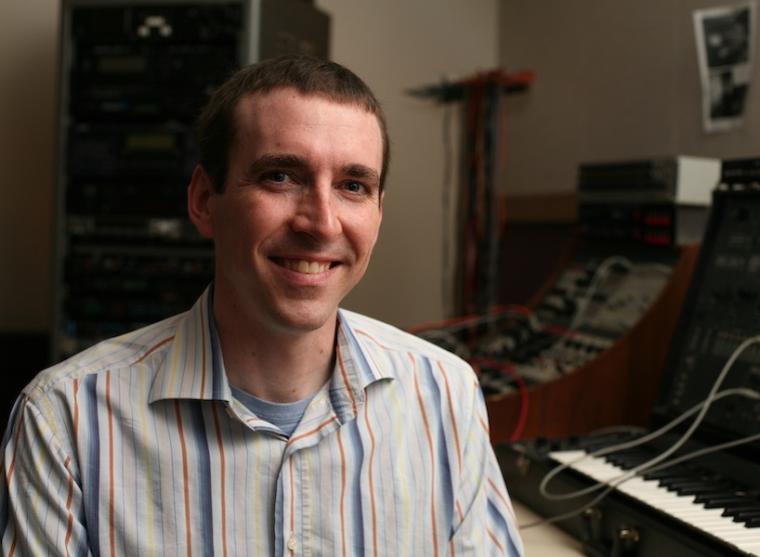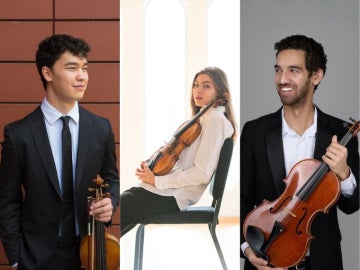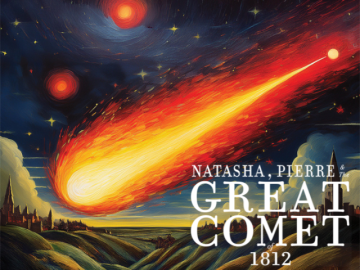TIMARA's Peter Swendsen Discusses Premiere with Jennifer Torrence '09
Inspired by Shakespeare, "What Noises Remain" emphasizes percussion and field recordings from around the world.
September 18, 2016
Julie Gulenko '15

Photo credit: courtesy Conservatory Communications
Growing up with a wide range of musical interests—singing, piano, saxophone, and guitar, to name a few—as the son of an engineer, Peter Swendsen was intrigued by the convergence of arts and technology from a young age. Later, during his college search, Swendsen found that Oberlin's small-town feel and cutting-edge music technology programs available made it the perfect haven for his exploration and discovery. He is now an associate professor of computer music and digital arts at the conservatory and is about to premiere a new collaborative project with percussionist Jennifer Torrence ’09. Titled What Noises Remain, the work is an evening-length piece for percussion, electroacoustic sound, text, and video. As explained in the project’s notes, Swendsen and Torrence take as their starting point Shakespeare’s iconic play The Tempest, and create a collaborative piece that is part archeological dig, part musical narrative—an expression of confinement, control, and ultimately, wonder.
In the week leading up to the premiere, we met up with Swendsen to discuss the project in his subterranean TIMARA (Technology in Music and Related Arts) studio, located on the lower level of Bibbins Hall.
Let’s talk a little bit about the TIMARA Department at Oberlin and that spot where music, arts, and technology intersect.
Our TIMARA program was very wisely named: “Technology in Music and Related Arts.” The first half of that has an obvious home in a conservatory: It’s music, and it involves all sorts of different kinds of technology. In the end it’s about sound. The “and related arts” part is something that is related again to all forms of music on some level, though it’s maybe not always acknowledged. I think that we have the opportunity because of the tools we use, the kinds of collaborative work that we do, and the interdisciplinary nature of the projects we undertake of making that relationship central to our mission. While we are focusing on music, we also have all these other tentacles out into other disciplines—such as dance, video, theater, text, and writing—lots of different things. It could be computer science or physics or anything like that. I think that those boundaries for me are totally fluid: What’s music, what’s art, what’s research, what’s performance. It’s an exciting field to be in because all that stuff gets thrown into the hopper and mixed up, and you get to extract little pieces.
And that leads us into What Noises Remain, which combines a lot of these different elements. Where did the idea for the piece come from and how did the project unfold?
My collaborator Jennifer Torrence, who graduated from Oberlin in 2009 as a percussion major, and I did a couple of projects together when she was here as a student and I had just joined the faculty. We’ve stayed in contact since she left Oberlin—sharing professional colleagues and places in common, especially in Norway, where I lived for a year and where she has been based now for a few years. About three years ago, we got together for a week just to brainstorm ideas for a new project. We both had time coming up and we wanted to make something new together. We were exploring three ideas, one of which was The Tempest—Shakespeare’s last play. I had seen a production of it in Stratford by the Royal Shakespeare Company 10 years ago that had really captured my imagination and had been sitting in my brain since. That was the project that we latched onto and slowly started chipping away, because we are far apart: She’s in Norway, and I’m here. She spent one of these last three years in Australia and New Zealand, so it took a while to gestate and come into being. And we’ve had some other wonderful collaborators along the way, but Jen and I have very much developed the whole thing together—both the music and the visuals, as well as the live performance and other elements. It’s been a really fun process because we’ve been able to do it very much as a team.
How much of the piece is taken from the play and how much is original content?
It’s definitely not a telling or retelling of the play. You won’t leave this hour feeling like you’ve had a version of The Tempest. There is some text from the play that appears in the piece, and there are definite references to characters and actions from the play that appear in the piece. Our thought was that Jen as the performer is returning to the island where main characters from The Tempest have been exiled to. Later, the rest of the characters arrive to the island as part of the action of the play. Our thought was that Jen is a kind of unintentional archeologist, so she ends up in the spot where all of this took place, but she doesn’t really know what took place. So she’s really exploring the place and discovering fragments of this past that she didn’t know existed. And I think we’ve all been in various kinds of places and contexts where that’s the case for us. Sometimes we go in search of those things, but other times we find ourselves somewhere and we realize that that place has a past and we start to uncover it bit by bit. So she’s kind of tracing or chasing these characters and the remnants of what happened there and never has enough of them at one time to tell the story, so to speak, but there’s this little sense of all those little things transpiring over the course of the piece that I think by the end references a lot of what happens in the story without actually telling it.
Is it helpful for your audience to have knowledge of The Tempest?
We’ve actually gone back and forth on that. What do we put in the program? Do we make it obvious? In the end, it’s really fairly abstract and is meant as a piece that can be entered into without that kind of context. I think that if you do know the play there will be moments that catch your attention in a different way. It’s a little bit like watching the cinematic version of your favorite book, which allows you to catch little things that a general audience wouldn’t catch. I don’t think that lacking the context of The Tempest will undermine people’s ability to have an experience with the piece.
What is Jen’s role as the performer?
Jen plays throughout, although she’s not always “playing” in a traditional sense. She has a bass drum and some much smaller instruments. For the first third of the piece, she is playing in a way that will more or less be recognizable as percussion performance. From that point on, less so. The drum, which has been a part of this piece from the very early stages, also ends up being a representation of the island. It’s this big round object, so her interactions with the drum are sometimes about the drum as an instrument and sometimes about the drum as an object or as a landscape. As the piece goes on, it’s less and less about interacting with it as an instrument and more about what it might represent in relation to her physical presence.
Aside from the live percussion and Jen’s performance onstage, what are some of the other elements? Any pre-recorded sounds?
Lots. Lots of field recordings. We hear different places, different times of day, different seasons, and a lot of water because of the nature of the piece—the island and the sea. Some were recorded locally at Lake Erie, some right in Oberlin, some recorded in Norway, recordings from the Canadian Rockies, from Scotland and England, from other parts of the West Coast of the United States, most of which were recorded specifically for this project. And there’s lots of video, much of which includes dance. There is a choreographer involved who is another longtime collaborator of mine named Amy Miller, who’s based in New York City. So there’s video of these kinds of landscapes and there’s video of Jen, but there’s also video of Amy. There are lots of elements weaving in and out of each other throughout. Jen is the only live performer.
For a new listener/viewer of this performance art, what are some of the elements that may be familiar?
There is a kind of introduction to the world of the piece that happens at the beginning. Jen’s role as a performer is something that we’ve thought a lot about, as well as her relationship to her instrument, which she questions throughout the piece. At the beginning, she moves through the playing of her instrument in a more traditional fashion and then comes out the other side with this new relationship to it.
There is a very strong sense of place. Even if someone is used to entering a sort of “concert space” and listening to more traditional music, that person also lives in a world where they engage with sound very regularly. I think if you’re used to listening in a musical, way you are also paying attention to things that are around you all the time—you hear the birds, the crickets, the rain, and all these things because you are used to using your ears. A lot of the sound world of this piece has to do with those things. So it’s not familiar maybe in a musical sense, but I think it’s familiar in a sonic reality sense, making it accessible in that manner. Where people start to hear that transition into what they think of as music might happen very quickly for some people, and for other people they might feel like they are in these environments and only occasionally getting something that is more “musical,” so to speak.
You may also like…
Amy Lee Joins Oberlin Conservatory Faculty as Associate Professor of Violin
The renowned violinist and associate concertmaster of the Cleveland Orchestra brings extensive teaching and performing experience to Oberlin
Oberlin Students Selected for Prestigious New York String Orchestra Seminar
Directed by Oberlin artist in residence Jaime Laredo, intensive 10-day experience culminates in performances at famed Carnegie Hall.
"The Great Comet" Starts Something New
Oberlin Music Theater's inaugural production is a story of beginnings, which is a fitting theme for the first main stage performance of the Conservatory's newest program.

